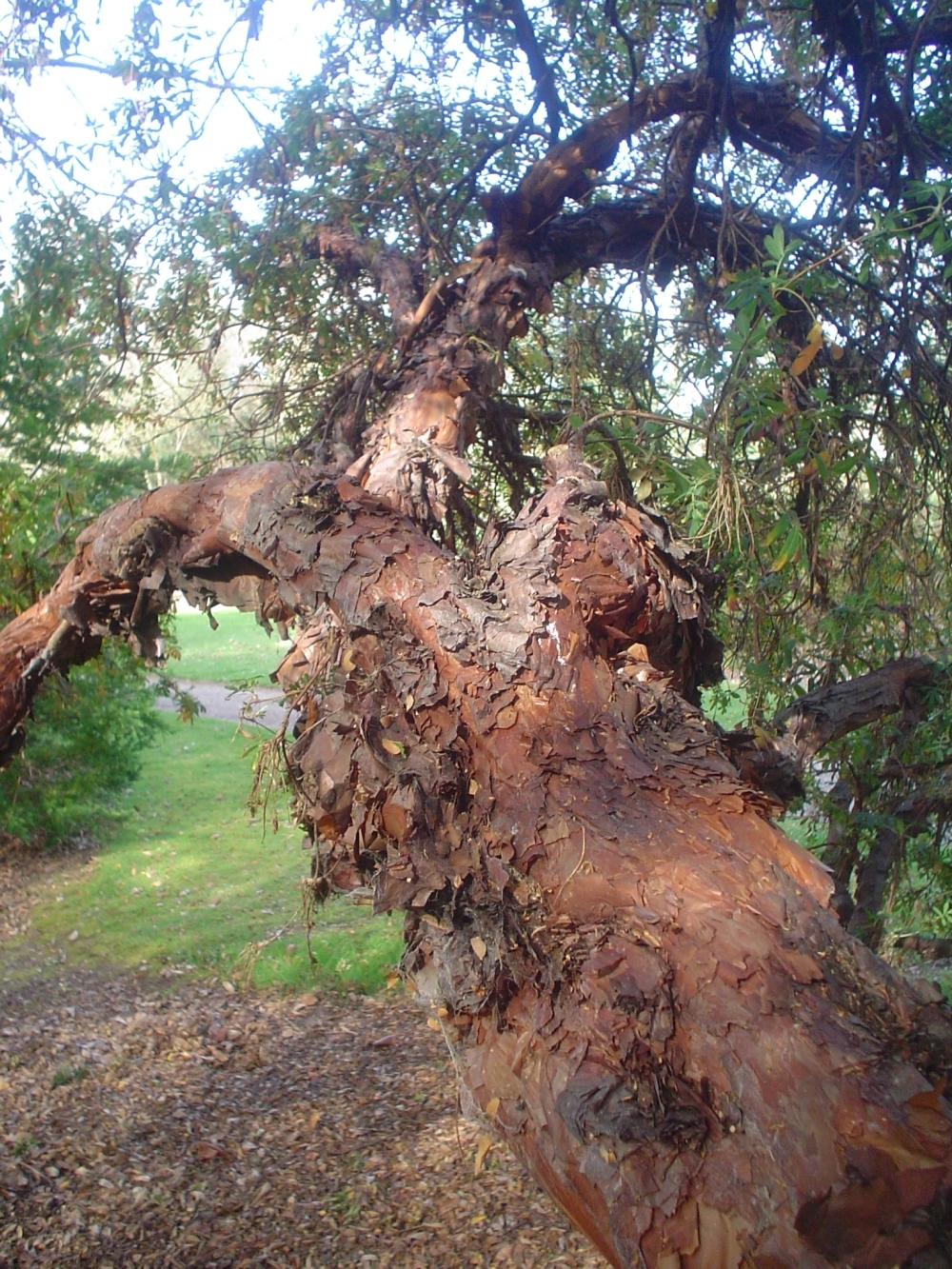- Polylepis australis
:"Tabaquillo" redirects here; it means "small
tobacco " and is also used for "Nicotiana obtusifolia .Taxobox
name = "Polylepis australis"

image_width = 200px
regnum =Plant ae
divisio = Magnoliophyta
classis =Magnoliopsida
ordo =Rosales
familia =Rosaceae
genus = "Polylepis "
species = "P. australis"
binomial = "Polylepis australis"
binomial_authority =Bitt. "Polylepis australis", also known locally as Tabaquillo or Queñoa is a South American member of the family
Rosaceae . The genus "Polylepis" originated in the easternSouth America , Andean forests cite journal |quotes=no |author=J. Fernández |year=1970 |title="Polylepis tomentella" y orogenia reciente |journal=Bol. Soc. Argent. Bot. volume=13 |pages=14–30 "Polylepis australis" is presumed to hold the high altitude record for any woody plant, growing at up to 5,000 m in theAndes . The plant has small,pinnate leaves, 7–10 cm long, normally composed of five or seven leaflets. In harsh winters, "Polylepis australis" survives by producing rolls of loose, papery like exfoliating brownish bark; the rough outer covering of the woody stem of tree. The southernmost stands of "Polylepis australis" are located in the high Córdoba mountains of centralArgentina (1,200–2,884 m above sea level (a.s.l.).cite journal |quotes=no |author=Daniel Renison, Ana M. Cingolani, Ricardo Suarez, Eugenia Menoyo, Carla Coutsiers, Ana Sobral & Isabell Hensen |title=The Restoration of Degraded Mountain Woodlands: Effects of Seed Provenance and Microsite Characteristics on "Polylepis australis" Seedling Survival and Growth in Central Argentina |journal=Restoration Ecology |year=2005South American "
Polylepis " mountain forests are recognised as being one of the mostendangered forest ecosystems in the world. During areforestation project, D. Renison (University of Córdoba ,Argentina ) found that thegermination of Polylepis australis stands decreases significantly with decreasing tree coverage cite journal |quotes=no |author=D. Renison & A. M. Cingolani |title=Experiencias en germinación y reproducción vegetativa aplicados a la reforestación con "Polylepis australis" (Rosaceae) en las Sierras Grandes de Córdoba, Argentina |journal=AgriScientia |volume=15 |pages=47–53 |year=1998. The first results of additional studies carried out in collaboration with Isabell Hensen (University of Halle ,Germany ) indicate that a clear negative correlation exists between the viability of seeds of Polylepis australis and the degree of human influence on the woodland stands. Seeds of Polylepis australis exhibited a great variation in terms of mass and percent seed germination among individual trees and among geographical regions.cite journal |quotes=no |author=Peggy Seltmann, Ilona Leyer, Daniel Renison & Isabell Hensen |title=Variation of seed mass and its effects on germination in "Polylepis australis": implications for seed collection |journal=New Forests Journal |volume=33 |issue=2 |year=2007Gallery
References
Wikimedia Foundation. 2010.
